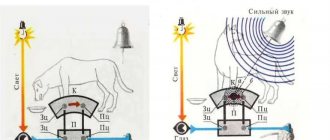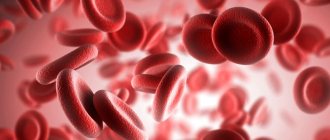After receiving the results of a laboratory test, the doctor must not only reliably determine the reasons why segmented neutrophils are low in the child’s blood, but also prescribe adequate treatment. Not all patients understand what this indicator is and how its deficiency in the systemic circulation affects their overall health. A low level of neutrophils in a child’s blood indicates a weak immune system, so action must be taken immediately.
What are neutrophils
The chemical composition of the blood contains a concentrated set of cells, where each type is responsible for individual functions. For example, red blood cells provide vital oxygen, platelets prevent bleeding, and white blood cells and lymphocytes protect against infections. As for neutrophils, the cells are a type of white blood cell that resist the penetration of microbes, bacterial and fungal flora into the body. Cells are responsible for sustainable immunity. If the acceptable indicator is deviated to a greater or lesser extent, an internal disease develops.
Neutrophils and neutropenia
Neutrophils are one of the types of cells circulating in the peripheral blood, a subtype of leukocytes. When analyzing the composition of the blood, the number of mature forms of cells - segmented leukocytes and immature stab cells - is taken into account.
The condition when there are too few neutrophils in the blood is called neutropenia.
In some diseases, an increase in the number of these cells - neutrophilia - is possible. In a child, it can be observed with acute purulent inflammation, deep burns, and malignant blood diseases.
The most important function of these cells is to protect the body from infectious agents. In the structure of the immune response, neutrophils have the function of identifying bacteria that have entered the body and destroying them.
The norm of neutrophils in the blood of children
The real neutrophil count can be determined using the leukocyte formula. The normal limit is set depending on the age category of the person and changes throughout life. In the presence of inflammatory diseases, it may deviate more or less, and with such abnormal deviations, doctors prescribe a detailed diagnosis followed by treatment. Acceptable norms of band and segmented blood cells are presented in the following table:
| Age of child, adult | Concentration of band neutrophils | Concentration of segmented neutrophils |
| 3 days of life | 3 – 14 | 47 – 70 |
| up to 1 year | 1 – 5 | 15 – 45 |
| 2 – 3 years | 1 – 5 | 28 – 48 |
| 4 – 6 years | 1 – 5 | 30 – 55 |
| 7 – 10 years | 1 – 5 | 40 – 60 |
| 11 – 16 years old | 1 – 5 | 42 – 60 |
| Adults | 1 – 7 | 45 – 70 |
Acceptable rate
The norm assumes the presence of segmented cells in the blood of children - from 15 to 70%, depending on age.
Band neutrophils make up 1–17% at the birth of a child, then their number rapidly decreases and after a week drops to 1–5%.
The process of neutrophil formation is constant. Their life span is short (several days, and sometimes only a few hours) and depends on the presence or absence of inflammatory processes in the body.
Mature cells circulate through the blood, engulfing and destroying bacteria, then die. To replenish their number, the bone marrow continually produces new cells. The consequence of this is an increase in the number of young people and a decrease in the number of old ones, provided that there is an inflammatory or infectious disease in the body.
The predominance in quantitative equivalent of mature cells over immature ones is considered normal. This indicates the absence of pathological phenomena. If there are more than 5% band cells in the blood, this indicates a serious disease.
It should be noted that the neutrophil norm is a relative and variable concept. The percentage may change throughout the day. It depends on the emotional state, physical fatigue and even on the amount of food eaten.
However, this circumstance must be taken into account before a laboratory examination, when the child is ill and determining the level of neutrophils is necessary as a diagnostic indicator. Before taking the tests, it is recommended to put the child to bed on time; noisy and active games are unacceptable before bedtime. The test must be taken on an empty stomach.
To determine the level of neutrophils, a detailed analysis of capillary blood from a finger is performed.
Reduced neutrophils in the blood of a child
With bacterial infections against a background of weakened immunity, the chemical composition of the blood changes significantly. Based on the results of the general analysis, one can judge the diseases of the child and adult body. However, during viral infections their effect is weak and passive. There are a number of physiological and pathological reasons that explain why low neutrophils appear in a child’s blood. Doctors, having correctly deciphered the leukocyte formula in each clinical picture, can predict the outcome. It is important to promptly determine why the protective cells are reduced.
Symptoms of disorders in the body: what to look for?
A condition in which a child or adult has low neutrophils is called neutropenia. Its clinical manifestations can be observed in the form of purulent tonsillitis, stomatitis, cystitis, as well as an asymptomatic inflammatory process, as a result of which osteomyelitis can develop.
Symptoms appear depending on what caused the neutropenia. In some cases, these are simple, at first glance, symptoms:
- general weakness;
- fatigue;
- sweating;
- tendency to frequent colds.
More serious symptoms indicating a decrease in the level of neutrophils are the presence of stomatitis, periodontal disease, and numerous inflammatory formations on the skin in the form of pustules.
In complicated situations, an increase in temperature and a febrile state may occur.
Asymptomatic neutropenia in infants is not considered a pathological disease, since by the age of three the number of neutrophils usually normalizes.
In childhood, when the child is 3 months or older, it is very important to monitor the health and functionality of the immune system. After all, its ability to fight penetrating infections depends on this.
Tests must be taken according to a routine medical check-up. But you should also contact your pediatrician if parents notice the following symptoms in their children:
- Increased temperature, periodic surges of hyperthermia without acute signs of illness;
- The appearance of pustules on the skin;
- Frequent infection with viral or bacterial infections (flu, sore throat, otitis media);
- Increased sweating, especially at night;
- Development of stomatitis, gum inflammation;
- Rapid loss of strength, lack of energy to perform daily work and study.
Any of these symptoms may be factors caused by a decrease in the white blood cell group. But basically, a decrease in protective forces is diagnosed with an increase in temperature and frequent colds.
It is worth noting that there is benign neutropenia, which is observed in children after birth. But at 2 years old it can go away without any treatment. In this case, deviations do not provoke any symptoms and do not affect the development of the baby.
What does it mean
Being microphages in their structure, neutrophils successfully fight bacteria and fungi, but are powerless against viruses. Produced by the bone marrow, ideally they penetrate tissue cells through the vascular walls, while paralyzing and absorbing harmful bacteria. They themselves die, but fulfill their primary mission. If the bone marrow produces a large number of young structures, then the number of mature neutrophils decreases significantly - it is relatively small. It is important to understand why neutrophils are low in a child under one year of age and older, and how this condition manifests itself.
segmented neutrophils are reduced
Girls, mommies... Each of you knows what we fear most. Of course for our children.
What happened with me? These are called panic attacks, right?
Anyutka is sick, sick, sick(
And it seems like it’s not for me to complain, I understand with my brain that some children get many times, tens of times more. I feel sorry for all the children on earth.
But for my child... I'm going crazy.
Over the last 5-7 days, Anya began to complain about her leg. Points to the ankle area.
Memories pop up in my brain about a boy, the son of a friend of my classmate (we live in a small town, I don’t know the boy’s mother personally, but I know him by sight). And so my classmate told me that this boy began to complain about his legs, the parents at first attributed it to injury, then they took him to the doctor, they waited for another month, and then it turned out that... leukemia. I feel incredibly sorry for the boy. They have been fighting for more than a year, and as always in our country they can’t help much, you need to go to Germany, and treatment there costs about 350 thousand euros. There is no help from the state, but, damn, there is an OLYMPICS. By placing it in all possible newspapers, posting advertisements around the city, they raised funds only for examinations in Germany. I think we went, I don’t know for sure.
It was me who retreated. When Anya’s leg started to hurt, do you know what the first thing I thought about? guessed it, I'm sure. I don’t even want to write these words.
My grandfather began to shake. He gave me ideas for a couple more terrible diseases (he’s just as crazy as me, I’m a copy of my dad’s).
As a result, yesterday morning I grabbed the child and ran to a paid laboratory, they passed detailed blood tests (general and biochemistry). My daughter is a hero. For about 20 minutes they picked at the hands, they couldn’t get into the vein, she endured it steadfastly, didn’t cry, didn’t wriggle out, she whined a little only when they finally got into the vein and they had already collected 1 test tube, we needed another one, and that’s when our tears began to flow. But she didn’t scream and stayed until the end. My Smartie. My resilient child.
Well... not everything is normal there, oh, not everything. Increased - red blood cells, monocytes, eosinophils. Reduced - segmented neutrophils, average hemoglobin concentration in erythrocytes. There are also deviations in biochemistry.
Naturally, after talking with my grandfather and not getting anything from him, I go to the Internet, where I find... it would be better if I didn’t find anything there... I get even more scared and even more afraid of terrible diagnoses.
Oh, I hope that these fears are from the category “I was leafing through a medical reference book. I found symptoms of all diseases.”
In general, we suffered from bronchitis for the second time in 2 months. There is no wheezing, the cough has subsided, the snot is still there. They took antibiotics. Oh, how I hope that deviations from the norms in the tests are related specifically to the disease.
About the leg. It really doesn’t look like a bruise (I really hope it’s a bruise or a sprain). Anya has been complaining for a week now. When she sits for a long time and suddenly stands up, she cannot step on it, then she walks away and stops limping. Yesterday everything was fine all day, but in the evening at dinner she began to whine and complain. And so abruptly and to the point of tears. I gave her Efferalgan, and after half an hour she calmed down. There is no swelling. There are no bruises either (and there never were).
My father will show the analysis to the pediatrician today or tomorrow; after all, he is a doctor for adults. For now, he told me not to make an appointment with other pediatricians (and no one in particular, I still haven’t found a doctor, there was one very good aunt, but she left for the USA for permanent residence).
Get crazy. From time to time such fear rolls in. My heart starts pounding(
I can’t cope and drive away bad thoughts.
Girls, maybe some of your friends here on BB have pediatricians who could also look at our tests? tell me if there is one. Just look and advise which specialist to contact with them.
Symptoms
If neutrophils are present in low concentrations, the patient experiences general weakness, suffers from excessive sweating and is prone to frequent respiratory diseases. The symptoms of the disease are identical to those of ARVI, influenza, and other ailments, depending on the specific clinical picture. Pediatricians strongly recommend that young parents pay attention to the following changes in the overall well-being of the baby:
- high temperature, fever;
- low weight gain;
- complete lack of appetite;
- tendency to inflammatory processes;
- increased drowsiness, tearfulness;
- life resource is reduced.
When neutrophils are elevated
To treat various diseases that provoke a drop in hematological values in children, it is necessary to strengthen the immune system. Regardless of the root cause of the disorders, the protective forces must be maintained at a normal level so that other ailments do not join the main pathology.
What drugs are used in the treatment of diseases?
- Antibiotics are used exclusively for bacterial infections, if the patient develops pustules or purulent inflammation of the respiratory tract. Drugs from the macrolide group are mainly selected because they are the least toxic to the developing organism.
- Vitamin complexes are required to increase immunity, enhance metabolic processes and regenerate damaged tissues. The pediatrician will tell you what vitamins the patient needs. You should not buy everything that is in the pharmacy, because excess nutrients can also have a negative effect.
- Detoxifying agents – in case of severe intoxication, it is necessary to cleanse the body of harmful toxins. For this purpose, sorbents and other drugs are used that accelerate metabolism at the cellular level.
- Auxiliary medications are selected depending on the child’s symptoms. If his oral mucous membranes become inflamed, rinse solutions are used. For nasal congestion, intranasal agents, etc. are used.
If children have a serious illness, they may resort to blood transfusions. But this is a radical decision and the need for it arises very rarely.
If a child's blood test shows high neutrophils, the condition is called neutrophilia and can be caused by many factors. For example, if the increase is insignificant, there is a possibility that this is the body’s reaction to the baby’s activity - he was running or playing happily before blood sampling.
- leukemia;
- vaccination;
- peritonitis;
- pneumonia, otitis media, sepsis, bronchitis, tonsillitis;
- third and fourth degree burns;
- abscesses;
- hemolytic anemia;
- diabetes;
- trophic ulcers.
If blood counts deviate from the norm, the doctor will prescribe an examination of the child to identify the reasons for the decrease in neutrophils.
Also, neutrophils can be increased against the background of a severe cough that occurred during ARVI. This may indicate a bacterial infection that should be treated with antibiotics.
Experts say that the degree of increase in the number of these cells depends on the strength of the inflammatory process. In this regard, if the level of neutrophils increases significantly, you should try to undergo all the examinations prescribed by your doctor so that he can make a diagnosis as quickly as possible. As a rule, treatment should begin immediately.
Sometimes blood tests show a shift in the leukocyte formula - when the overall level of leukocytes is normal, but the number of segmented cells is significantly higher than normal. This picture is observed in some diseases:
- infectious diseases that are asymptomatic;
- inflammatory processes in acute form;
- different types of tumors.
Note that a completely healthy child can have an increased level of these cells. It is believed that an increase in neutrophils to 7-8*10⁹/l is moderate and may indicate that the baby has recently been sick or had a heavy breakfast before blood sampling.
You may need to take additional tests, such as urine, to determine the disease.
Causes
Before increasing neutrophils in a child’s blood, which are pathologically low, it is important to find out the main causes of the pathology and eliminate them from the patient’s life. Bone marrow cells produce immature neutrophils due to physiological and pathological factors. Among the non-dangerous reasons not related to the development of a serious disease, doctors highlight the following points why blood cells are low:
- nutritional features;
- excessive physical activity;
- presence of bad habits;
- stressful situations;
- taking certain medications.
- Pathological, health-hazardous factors why neutrophils are significantly reduced in a child’s blood are presented below:
- injury;
- as a consequence of preventive vaccinations;
- general intoxication of the body;
- malignant diseases of the systemic bloodstream, for example, leukemia;
- extensive damage to internal organs;
- increased activity of pathogenic flora.
Infections that cause a decrease in neutrophils
A decrease in the concentration of red blood cells indicates an infectious and inflammatory process and requires urgent correction with medication. If you conduct additional examinations of once healthy organisms, you can detect the content of the following pathogenic flora if blood cells are low:
- infections of the gastrointestinal tract: salmonellosis, diphtheria, escherichiosis, dysentery;
- infections of the brain and meninges: polio, meningitis, encephalitis;
- infections of the kidneys and urinary system: pyelonephritis, cystitis;
- skin infection: pyoderma, furunculosis, erysipelas;
- respiratory tract infections: tonsillitis, acute rhinitis, laryngitis, bronchitis, pneumonia.
Congenital diseases
With pathologically low counts of band neutrophils diagnosed immediately after the birth of a child, doctors do not exclude progressive Kostmann agranulocytosis of the autosomal recessive type. The disease is congenital, has no cure, and in the relapse stage, decreased segmented cells can lead to the sudden death of a newborn patient.
Functions of neutrophils
All neutrophils that are found in peripheral blood are divided into three groups. Each of them is characterized by the degree of maturity of these particles:
- The youngest cells are called myelocytes or metamyelocytes.
- Cells of average maturity are rod-nucleated. Their core is not divided, it is elongated and twisted. Doctors call these particles rods.
- Fully mature cells are segmented. This name indicates that the nucleus of mature cells is segmented.
Neutrophils help the body defend against infections. Their main job is to capture and absorb solid particles. This function is extremely important for the body and is called phagocytosis. In the process of absorbing a solid particle, neutrophils die, but before that they manage to release a special substance.
Neutrophils are an important component of the blood; their level indicates the body’s ability to resist diseases.
The leukocyte formula gives a general idea of human immunity and includes a harmonious ratio of five leukocytes: monocytes, eosinophils, lymphocytes, neutrophils and basophils. Violation of the norm of these indicators in a general blood test helps to recognize pathologies, including malignant neoplasms.
Indications for a general blood test, in particular to determine the quantitative ratio of the neutrophil fraction, are the following diseases:
- upper respiratory tract diseases (sore throat and pneumonia);
- pathologies of parenchymal organs (pancreatitis and cholecystitis);
- sepsis, gangrene and extensive burns of the skin;
- heart attack;
- tuberculosis;
- hypoplastic and aplastic anemia;
- blood loss;
- appendicitis and peritonitis;
- chemical poisoning;
- rheumatic attacks.
In general, leukocytes perform a protective function for the body: they create a barrier to pathogenic microflora (infections, viruses and bacteria), and are also designed to absorb pathogenic bacteria, the products of their vital activity and decay.
The leukocyte protective barrier involves the complex functioning of individual factions, each of which strictly performs its own functions. Thus, the task of neutrophils is to absorb pathogenic microorganisms and break them down in their own body.
The mechanism is simple: if there is a focus of inflammation in the body, a segmented (adult) neutrophil from the blood is directed to the pathogenic focus, so its quantitative ratio with other leukocytes in the blood stream may temporarily decrease.
Why is neutropenia dangerous?
With this disease, the number of immune responses to pathogenic flora is significantly reduced. The child experiences frequent infectious and viral diseases, which are accompanied by intoxication of the child’s body, and immune reserves are reduced. Among potential complications, doctors do not exclude digestive problems, chronic diseases of the gastrointestinal tract, and a tendency to weaken the immune system. If there are no timely response measures, chronic neutropenia is only aggravated by unpleasant relapses.
In case of deficiency anemia (when red blood cells are low)
How to distinguish a viral from a bacterial infection using a blood test?
Most of all, neutrophils fight, and very successfully, against fungal and bacterial infections. But they have a much lesser effect on viral ones.
But how can a blood test distinguish a viral from a bacterial infection? If a clinical blood test is done, this will not be difficult.
As you know, the blood contains elements such as leukocytes, which provide protection to the immune system, platelets, which are responsible for blood clotting, as well as red blood cells, which supply oxygen and remove carbon dioxide.
Since they are all present in a certain quantity, the lack of one of the elements will prompt the further course of treatment. By the way, neutrophils are actually not suitable for fighting tumors. They cannot provide anthelmintic protection either.
How to increase neutrophils in the blood
The lack of protective cells can be compensated for by dietary habits, vitamin therapy with B9 and B12, and iron supplements. If the reason why neutrophils are low is the increased activity of a pathogenic infection, it is necessary to promptly identify and destroy the pathogenic pathogen. The specialist prescribes antimicrobial drugs; the most effective are representatives of the penicillin series.
If the reason why neutrophils are low is progressive stomatitis, it is recommended to use local antiseptics externally - Miramistin and Chlorhexidine. When long-term drug therapy is a pathogenic factor, it is necessary to urgently adjust it, that is, temporarily stop taking certain medications. Further treatment of neutrophilia is predominantly symptomatic.
Leukocyte formula. How to figure it out?
Only a specialist can correctly interpret the results of a leukogram. If segmented particles predominate in the blood formula, they speak of a shift to the right. If the stabs are enlarged, move to the left. A shift to the left, that is, a predominance of immature particles, may indicate a severe form of inflammation, as well as the presence of a tumor. A shift to the right may indicate:
- liver and kidney dysfunctions;
- radiation sickness;
- anemia.
The leukocyte formula shows the percentage of different types of leukocytes
https://youtu.be/jnHwQ72xQvE
Tasks of neutrophils
Neutrophils, together with lymphocytes, are the main “attacking” link of the immune system. They can move freely not only along the bloodstream, but also pass through the vascular wall into the tissue. This ability to move is provided by false “legs” in the form of a protrusion of the wall.
When approaching a bacterium, the cells surround it with their protoplasm, draw it inside and dissolve it. In this case, the neutrophils themselves die. They are replaced in the bone marrow of children by millions of new ones, to whom information about the affected “enemy” is transmitted. Segmented cells can destroy bacteria and fungal infections, but are powerless to fight viruses.
An increase in the number of segmented leukocytes in a child’s blood test during an infectious disease indicates a good protective reaction of the baby, the ability to resist pathological organisms.
A decrease in cells relative to the norm causes concern for the doctor and indicates low immunity.
How to prepare your child for a blood test for neutrophils
An analysis for segmented neutrophils is done from capillary blood, which is taken from a finger in children, and from a toe or heel in newborns.
You need to bring your child in the morning on an empty stomach, without even giving him tea. Breastfeeding is allowed on a schedule. The baby should be reassured. After the analysis, do not rub your finger or treat it with an apple or banana.
Since your cell levels can be affected by the medications you are taking, it is best to ask your doctor in advance whether you need to stop taking them and for how long.
If the cause of a change in the level of segmented neutrophils is detected in a child, treatment is directed to the underlying disease. In any case, parents are required to comply with the basic requirements for the daily routine and nutrition of their children.
Indicators of the main parameters of a blood test are important in assessing a person’s health status. Particular attention is paid to children under one year of age. It is necessary to donate blood for analysis every month; if any changes from the norm are detected, even more often. Neutrophils are a type of leukocyte and perform a protective function in the body. There are two types of neutrophils: segmented and band. If it is found that segmented neutrophils are reduced, we can talk about low immunity in the child.











